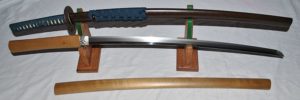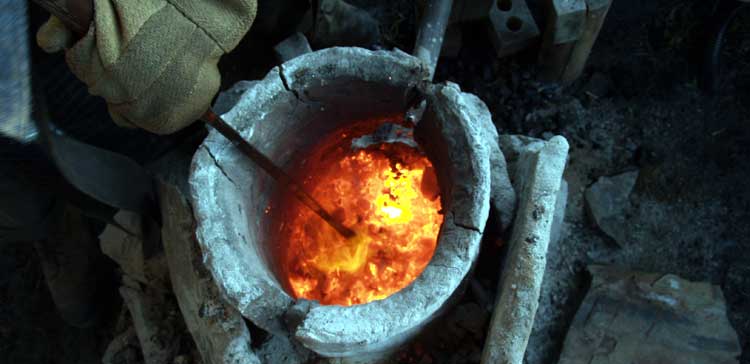Recently on a visit to the Metropolitan Museum of Art in New York I wandered into a room full of Katanas. Katana are Japanese samurai swords, exquisite objects that seamlessly integrate lethal utility and beautiful design. I read a little about the labor-intensive process used for forging these blades. It occurred as an obvious analogy for the process of creating one’s soul.
Forging the Sword of One’s Soul

Japanese Katanas
The gleaming, gently-curved razor-sharp steel blades started out as a reddish rocky material from the ground. Iron ore is in a natural and unrefined state, much as I was driven by my magnetic center, when I arrived at a prospective student meeting. The meeting was offered by a Fourth Way school based on the teachings of George Gurdjieff and Peter Ouspensky.
Ouspensky describes “magnetic center” as a center of attraction that forms in a person when they accumulate enough influences of a certain type. These influences come from outside ordinary life. They can be traced in religion, literature, philosophy, and art.
The Role of the Magnetic Center
The magnetic center is a kind of radar that resonates when it comes into contact with such influences. It forms over time as one finds, accumulates, and digests what Peter Ouspensky has labeled as B influence. Although a person’s inclinations and talents are often in their essence (what they are born with), the magnetic center forms in personality. It becomes one of several identities. It begins to filter and evaluate ideas, informing essence, and giving the person purpose and direction. But because the magnetic center is in personality, it is one of several identities that compete for our attention and resources. Most of us also seek to find identity through possessions, position, people, and place.
If, as Ouspensky indicates, the magnetic center is strong, it can distinguish false and mediocre ideas from the truth. In this way it leads the person to a school. A Fourth Way school, like other esoteric schools, teaches ordinary people to achieve and maintain higher states of consciousness. To learn to know and be one’s Self is possible if the school is lead by a teacher who has already achieved higher consciousness. Ouspensky labels this C influence. At this point, the person must release their magnetic center to focus on the influences available in the school. Otherwise, they will continue to search for something they have already found.
Forging Ore into Steel – a Transformation
The transformation of iron ore into steel begins by melting the ore in a furnace and plunging it into a mixture of cold water and clay. The next step is the forging of metal chunks. The heat purifies the metal and infuses carbon into the iron which yields carbon steel with its added strength, hardness and flexibility. Purification and transformation continue as the bricks are repeatedly hammered, folded, and flattened at very high temperatures.
The Heat Process and the Role of Transforming Friction
To continue this analogy, the new student of awakening must ascend to the level of the school, which is higher than life. Ascent occurs by accepting and applying additional laws, the rules and conditions set by the teacher. And just as in forging iron through heat, the ensuing friction is a catalyst for change. A teacher provides special conditions to support an environment suited for conscious development. Schools aim to produce consciousness in their students. This process is successful when the students accept the necessity of transforming friction.
Through applying heat and stress, a sword becomes flexible but firm, hardened and sharp, but not brittle. Both simple and sophisticated. The student becomes gentler, but firmer, smaller but stronger, and above all, self-aware.
Images courtesy of Wikipedia.
